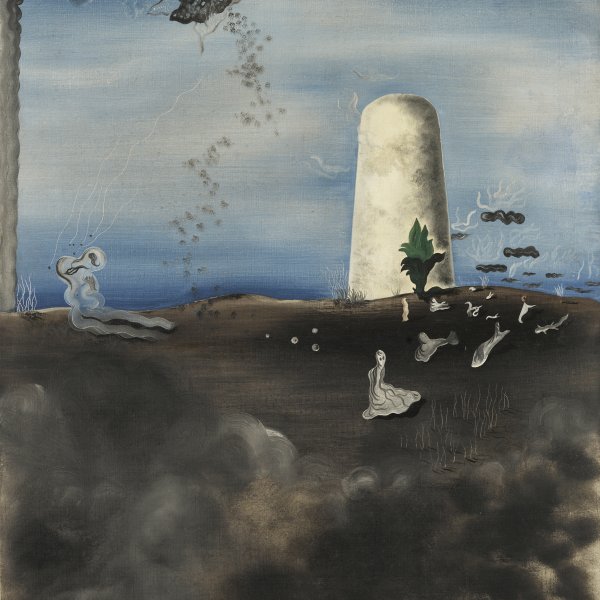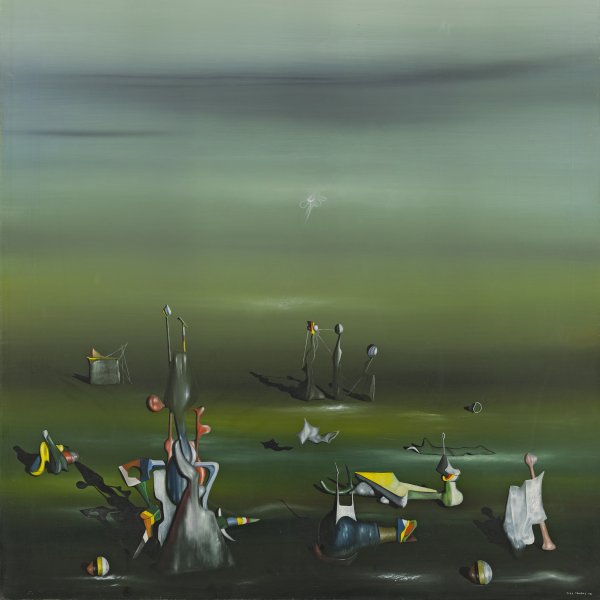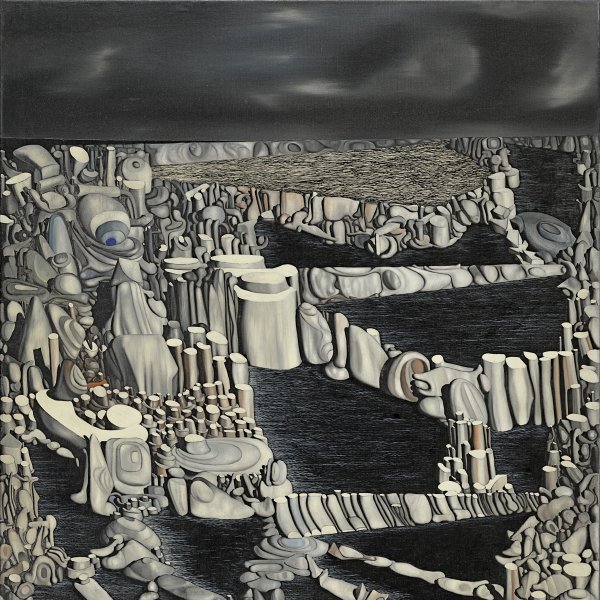Yves Tanguy
Paris, 1900 -Woodburry, 1955
The French painter Yves Tanguy was a prominent member of the Paris Surrealist group. His work was considered by André Breton to epitomise the movement and in the 1940s he powerfully influenced the generation of young artists, among them Roberto Matta, Wolfgang Paalen and Esteban Francés. In 1923, after being hugely impressed by the sight of a work by Giorgio de Chirico in the window of Paul Guillaume’s gallery, he decided to take up painting and began to train as a self-taught artist.
He soon developed an interest in Surrealism and, after meeting André Breton, with whom he became close friends, he joined the group along with his friends the poet Jacques Prévert and the writer Marcel Duhamel. His style soon evolved from the Expressionism of his initial works to the automatism practiced by the Surrealists. He went on to sign the Surrealist manifestos and from 1927 onwards exhibited his paintings at their shows — works populated by phantasmagorical figures and forms that created unreal perspectives, conjuring up an oneiric, timeless atmosphere in which silence reigns. Tanguy remained close to Breton and his ideas until 1946, even though numerous artists left the group owing to disagreements over Breton’s approach to the artistic and political development of the movement.
With the help of the painter Kay Sage, Tanguy arrived in New York in 1939. A year later he married her and, although he went back to visit France after the Second World War ended, he settled permanently in America. In 1942 he bought a farm in Woodbury (Connecticut), where he lived with his wife until he died.
He soon developed an interest in Surrealism and, after meeting André Breton, with whom he became close friends, he joined the group along with his friends the poet Jacques Prévert and the writer Marcel Duhamel. His style soon evolved from the Expressionism of his initial works to the automatism practiced by the Surrealists. He went on to sign the Surrealist manifestos and from 1927 onwards exhibited his paintings at their shows — works populated by phantasmagorical figures and forms that created unreal perspectives, conjuring up an oneiric, timeless atmosphere in which silence reigns. Tanguy remained close to Breton and his ideas until 1946, even though numerous artists left the group owing to disagreements over Breton’s approach to the artistic and political development of the movement.
With the help of the painter Kay Sage, Tanguy arrived in New York in 1939. A year later he married her and, although he went back to visit France after the Second World War ended, he settled permanently in America. In 1942 he bought a farm in Woodbury (Connecticut), where he lived with his wife until he died.





